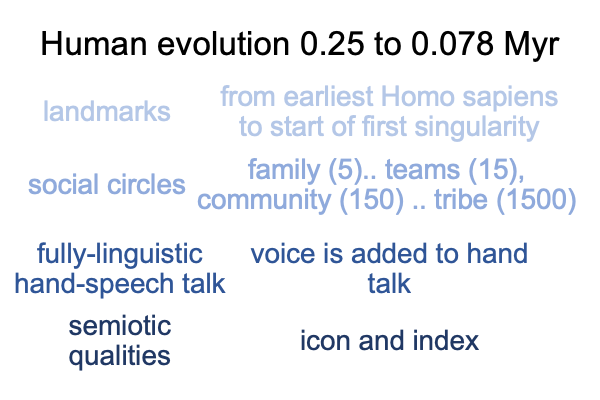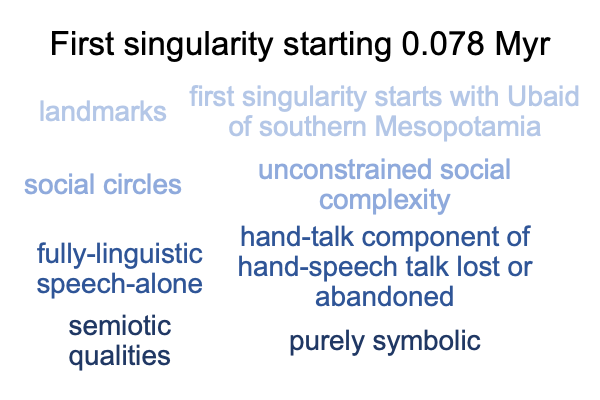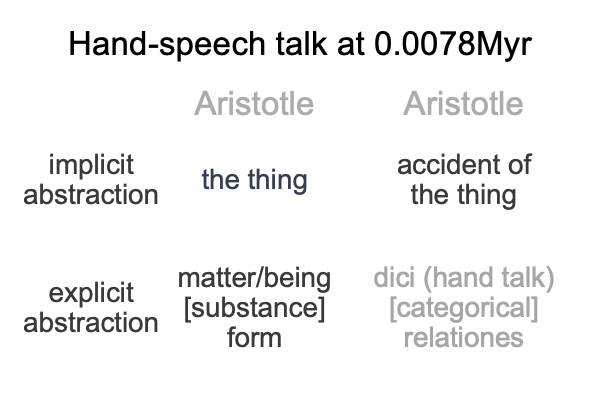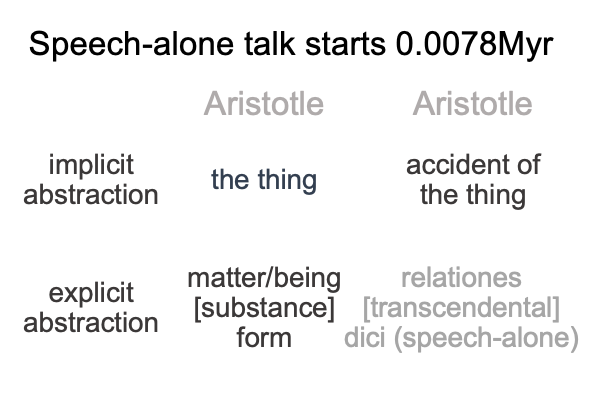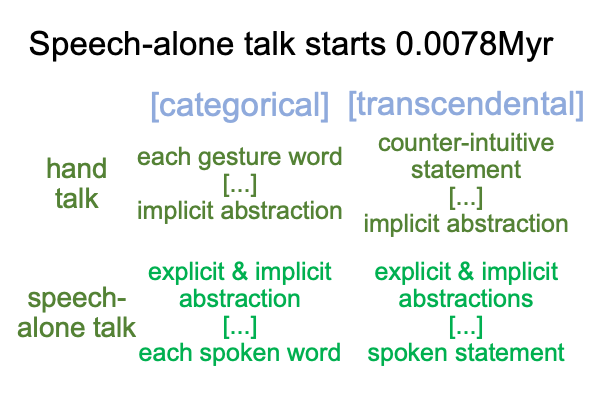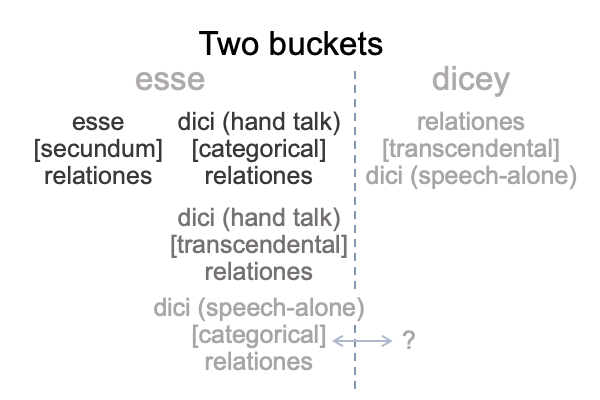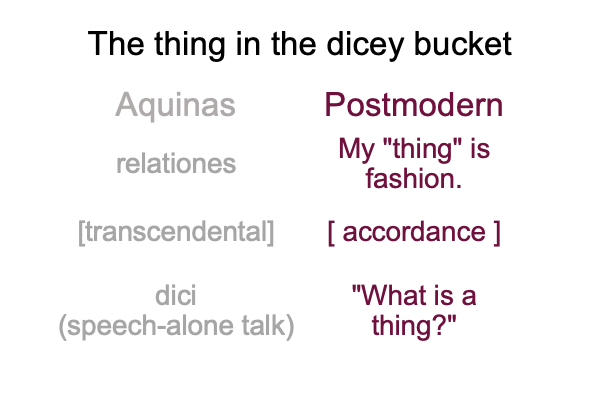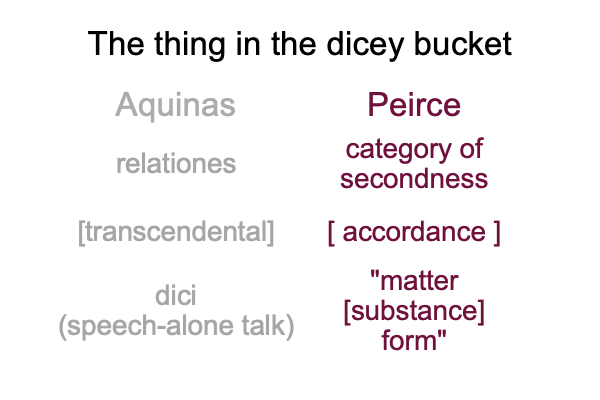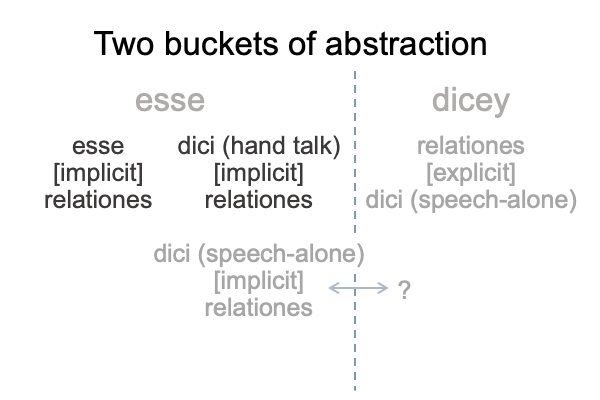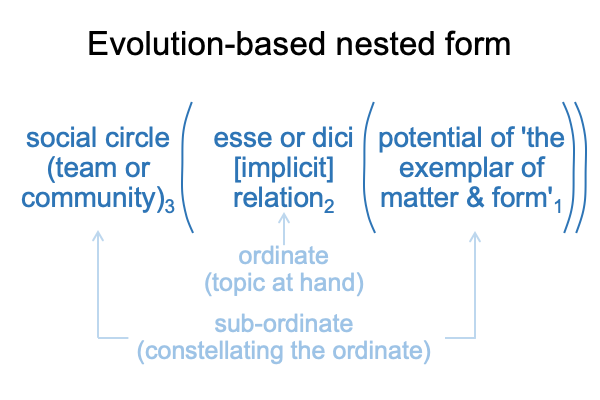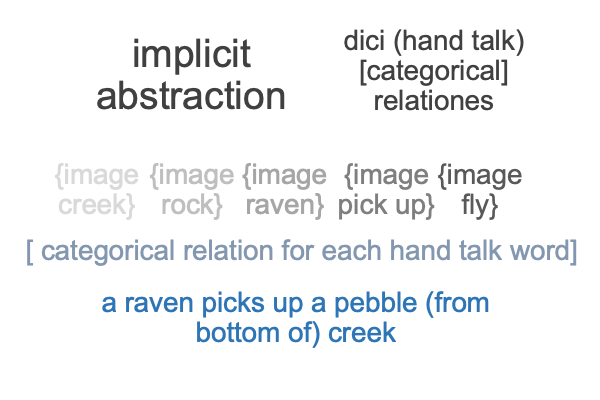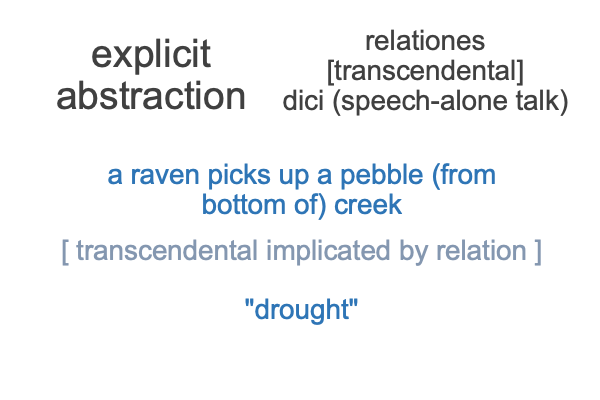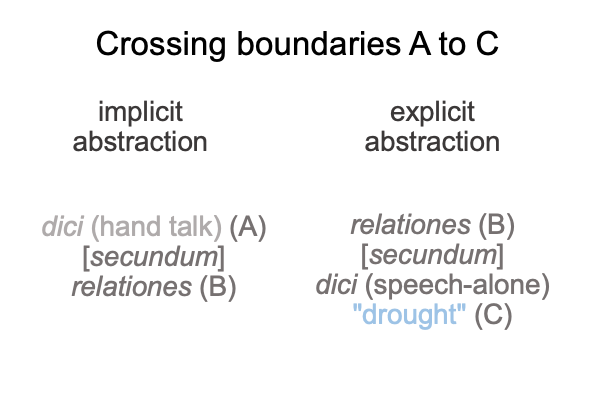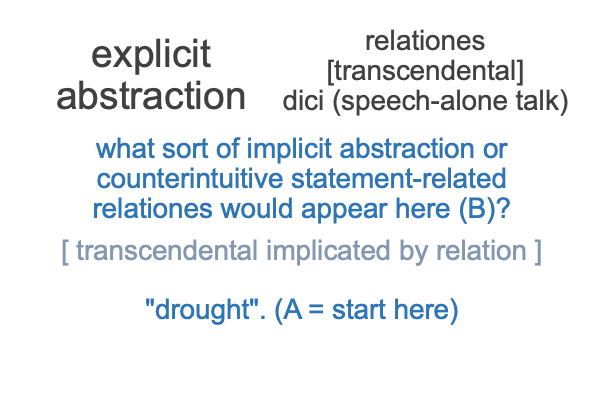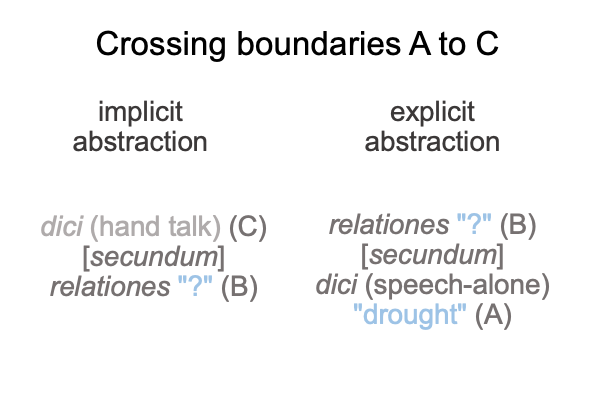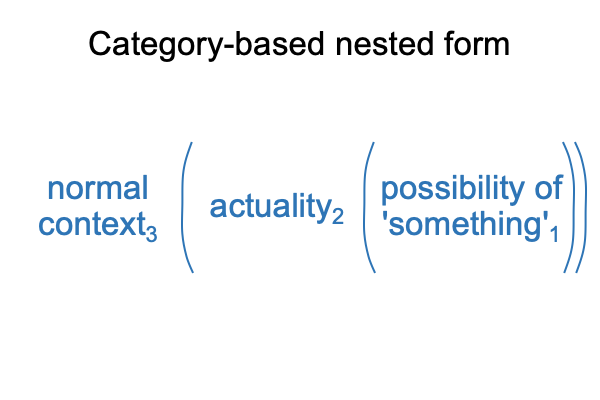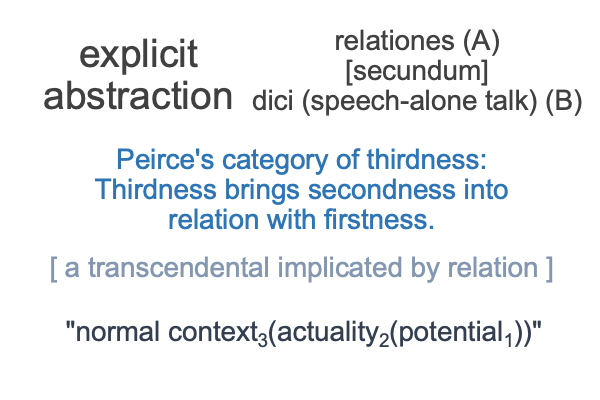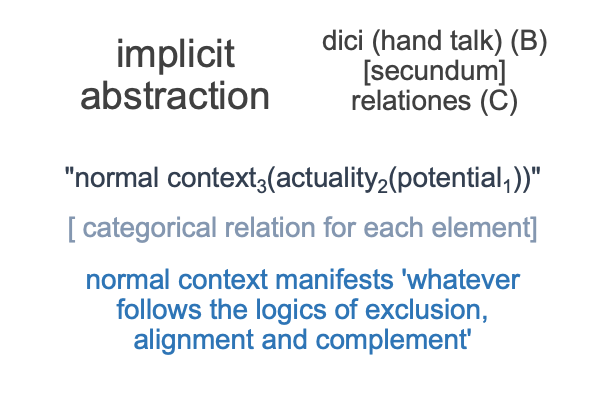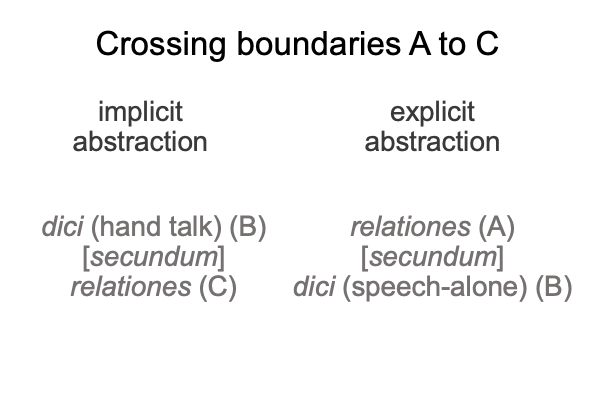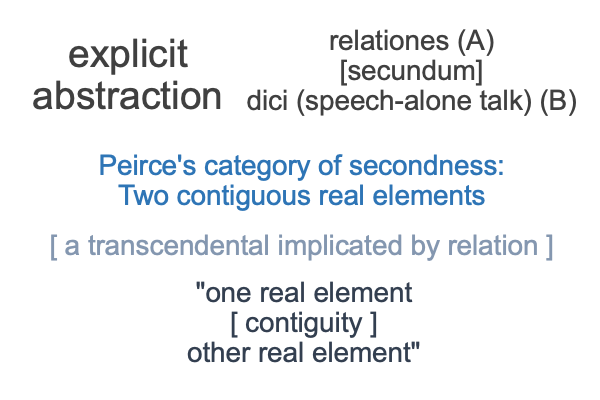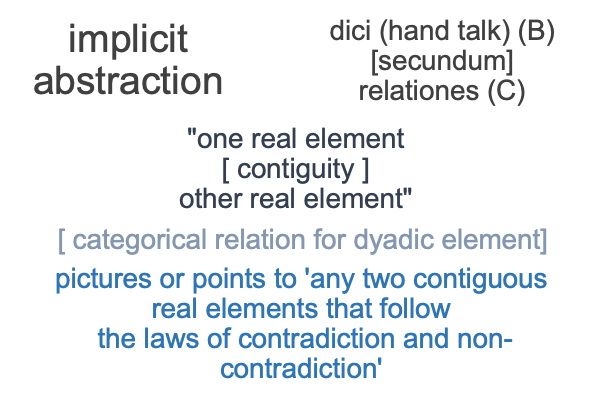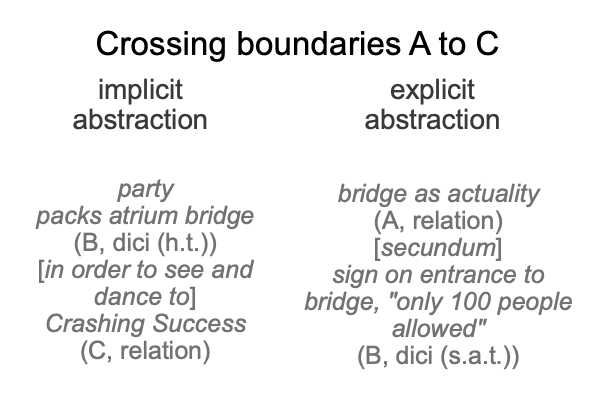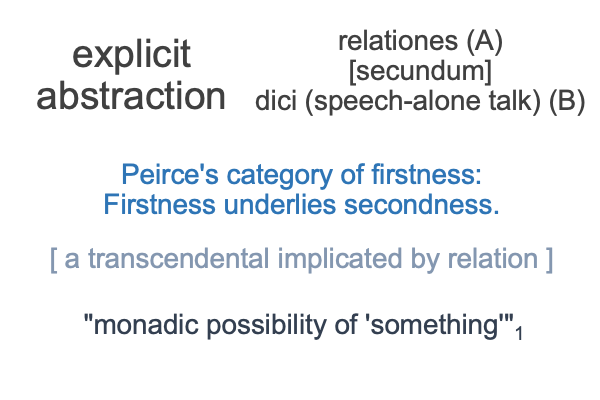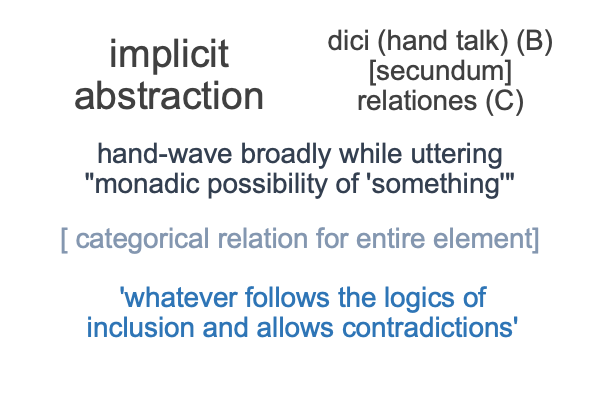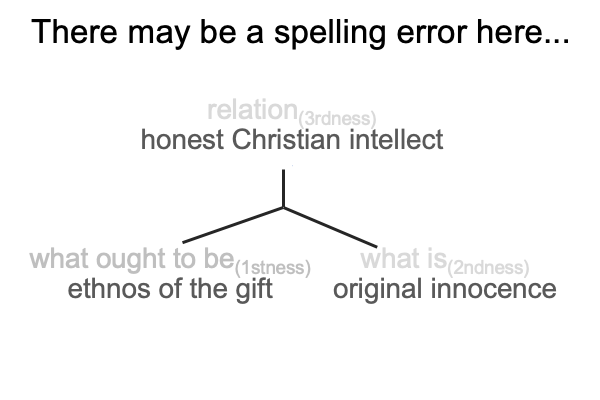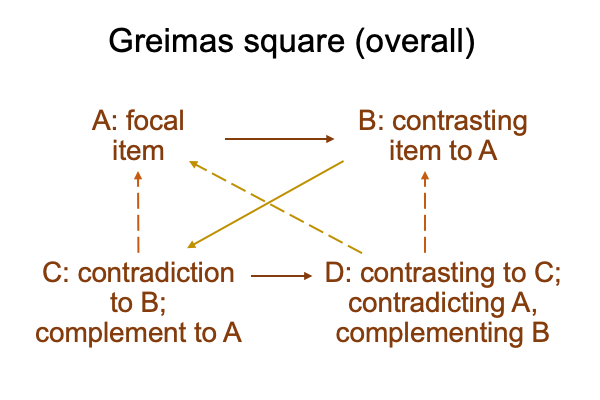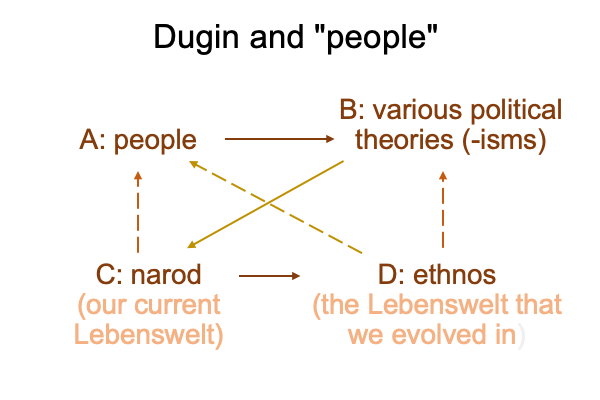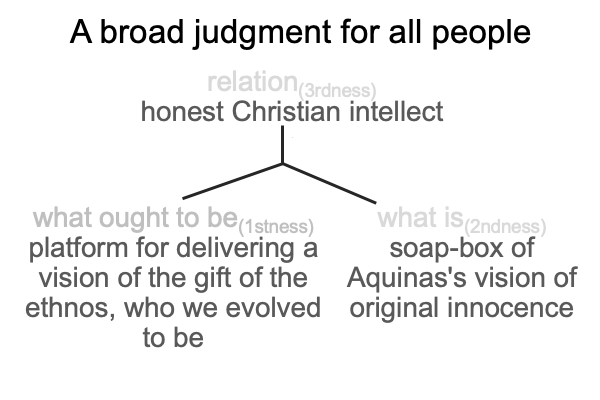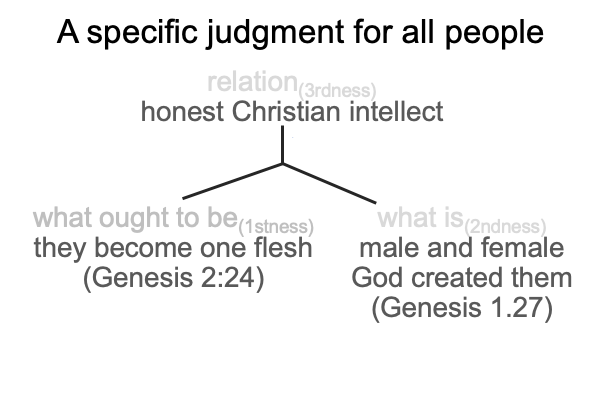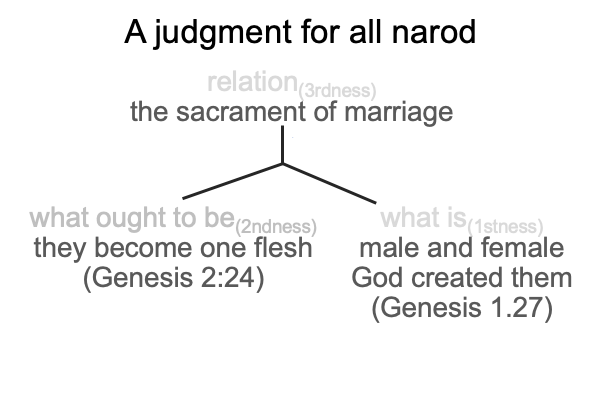Looking at Tomasz Duma’s Article (2023) “The Specificity of Secundum Dici Relations…” (Part 7 of 14)
0062 The fourth sample, goes back to Commentary on Sentences (d.26, q.2, a.1.c., ad. 4)
Consider the possibility of a real (mind-independent) distinction among the divine Persons in the Trinity. The word, “Trinity”, labels a relation. The Divine Persons label content within the relation. In other words, the relation is real and the elements within the relation are real as well. Explicit abstraction and speech-alone talk may label all the real elements. Three real persons occupy slots for an immaterial triadic relation. Each of the three persons receives a name.
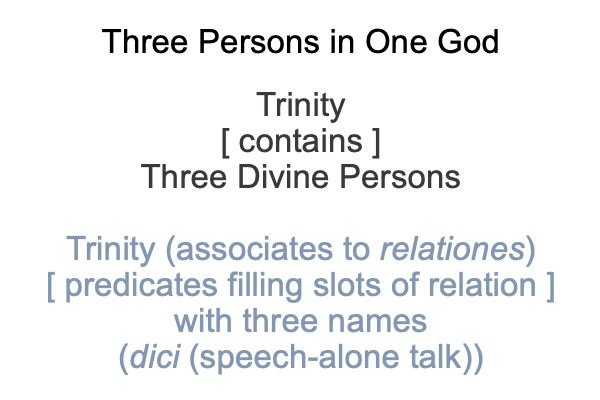
0063 Of course, the full story is a little more complicated, as discussed in the first interlude in How To Define the Word “Religion” (by Razie Mah, available at smashwords and other e-book venues).
0064 In the above application, as with the previous example of a dici (speech-alone talk) relation, relationes associates to the slot for matter and dici (speech-alone talk) associates the slot for form.
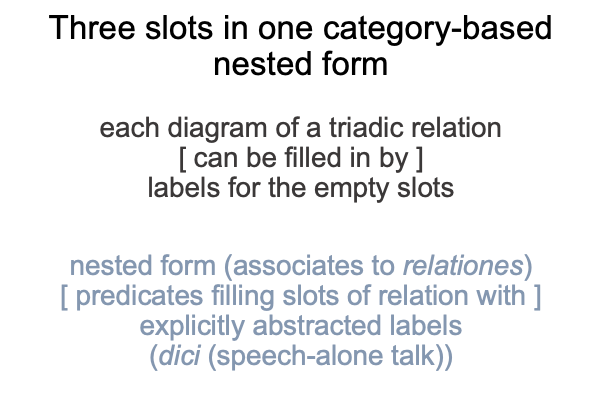
0065 What about hand talk?
One could never discuss the nature of the Trinity using hand talk, because there is no thing to picture or point to. But, that does not mean that there is no triadic relation. If relationes goes with form and dici (hand talk) goes with matter and ifdici (hand talk) cannot picture and point to referents in such a manner as to articulate an explicit abstraction, then one cannot presume that there is no esse. One cannot presume that there is no relationes secundum esse.
This reminds me of the distinction between categorical and transcendental affordance (secundum). Each gesture-word in a hand-talk statement categorically pictures and points to things (that is, referents). But, the connection between the statement and the recognition of the referent of the statement borders on transcendental, especially when the connection is embedded in a grammatically correct counter-intuitive statement.
The bottom line?
Our lineage adapts to the potential of triadic relations.
So, if the Trinity constellates a triadic relation, then humans are prepared by evolution to contour their awareness according to that relation. This contouring of awareness may be diagrammed as a triadic relation, because the diagram pictures and points to the way that each label occupies each slot.
0066 Here is a prior example, formatted in order to show how a fully linguistic hand-talk statement may generate a relationes secundum dici (hand talk). The statement serves as matter. A category-based nested form serves as form. The statement informs the slot for actuality2. Social construction provides the normal context3 and potential1.
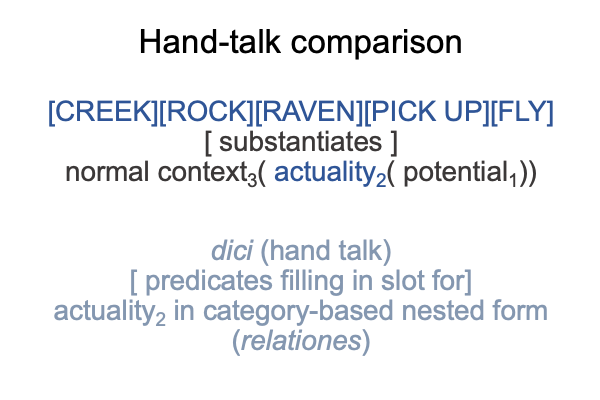
0067 The lesson?
In the above application, typical of dici (hand talk) relations, hand-talk goes into the slot for matter and relationesassociates to the slot for form.
0068 So, where am I going with this?
Well, the first four samples offered by the author of the term, relationes secundum dici, reveal that Aquinas consistently offers samples for dici (speech-alone talk). This suggests that Aquinas works with explicit abstractions, typical for our current Lebenswelt.
Yet, when human evolution is taken into consideration, our genus evolves while practicing dici (hand and hand-speech talk) and working with implicit abstraction.
In the Lebenswelt that we evolved in, dici (hand talk) pictures and points to its referents, even when fully linguistic and even when gesture-words are used in counter-intuitive grammatically correct statements. Consequently, dici (hand talk)has the same hylomorphic character as relationes secundum esse.
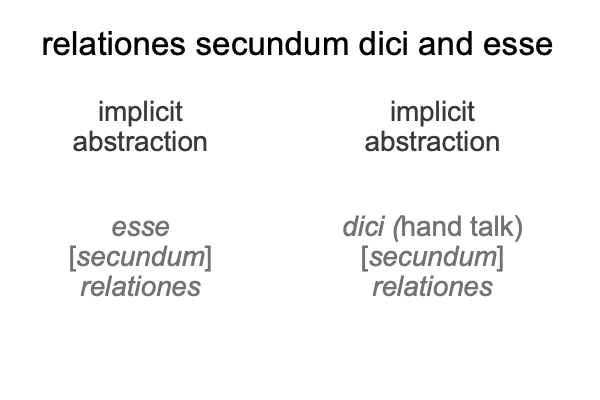
0069 Furthermore, the hylomorphic structure for the term, relationes secundum X, changes when X is hand talk as opposed to when X is speech-alone talk.
Dici (speech-alone talk) offers labels that go into the slot for forms. The corresponding relations associate to the slot for matter, in a reversal of the foundational relationes secundum esse.
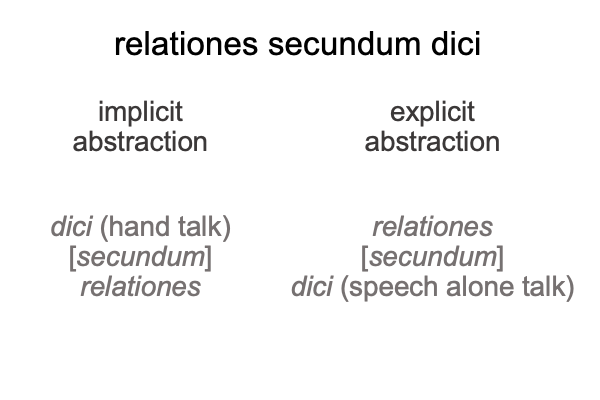
So, the specificity of dici relations turns out to differ when dici is hand talk, as opposed to speech-alone talk.
How strange is that?

